Step-by-Step Guide to Building a Training Roadmap
Learn the basics of a training roadmap, from key components to common mistakes. Follow this step-by-step guide to build a comprehensive training map for your team.
Learn the basics of a training roadmap, from key components to common mistakes. Follow this step-by-step guide to build a comprehensive training map for your team.
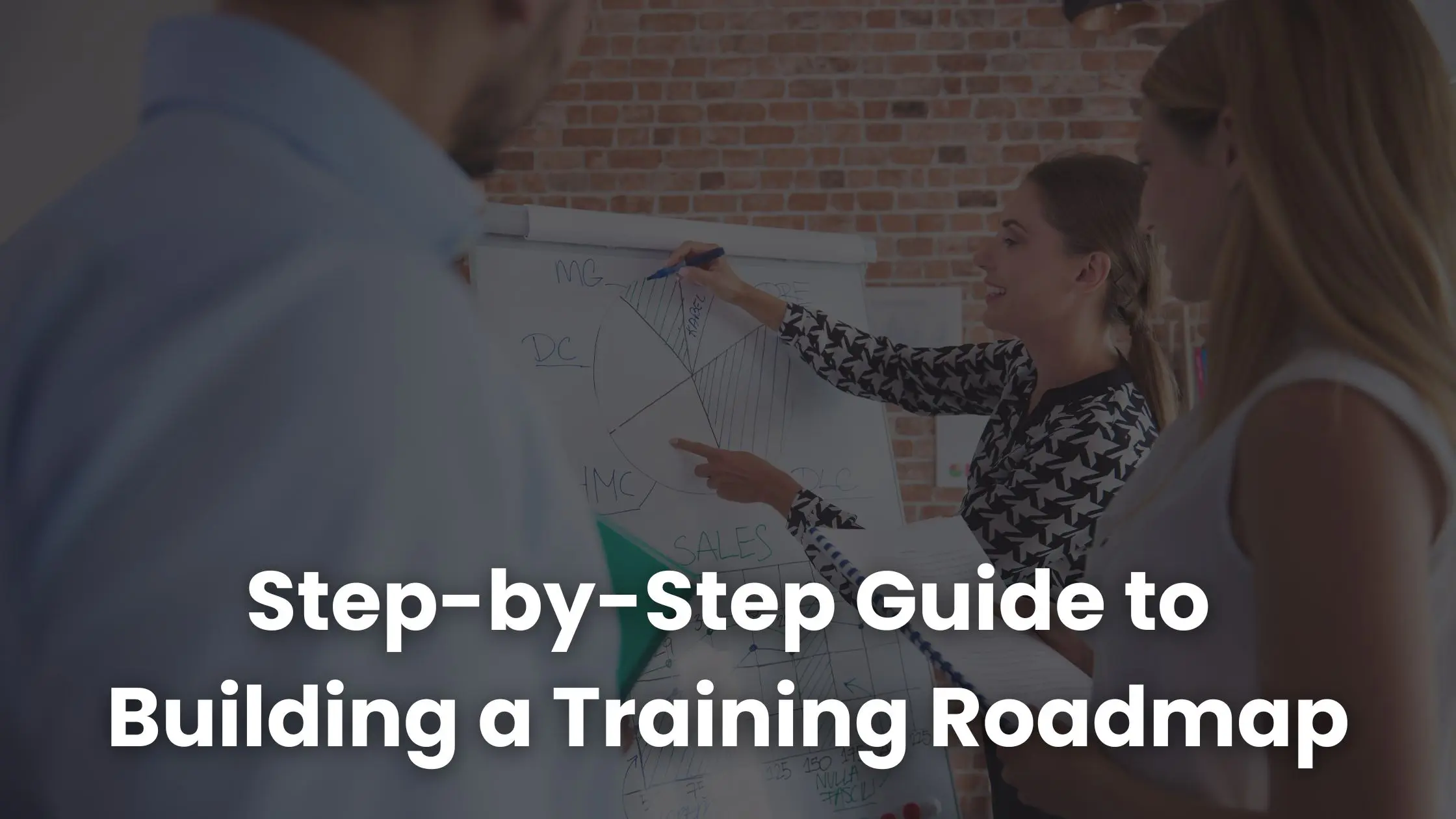
With 9 in 10 executives facing skill gaps, a structured training roadmap is necessary for businesses that want to stay competitive.
A good roadmap does more than check boxes. It makes sure training is laser-focused on your employees’ real needs, not scattered workshops that feel irrelevant. When done right, it works for everyone, including new hires, experienced staff, and leadership.
All of this results in a culture of continuous learning and a workforce that adapts quickly as new challenges arise.
If you want to achieve the same kind of impact, we’ll walk you through a step-by-step training roadmap process. This process has been proven to help companies close skill gaps, boost engagement, and build teams that are well-prepared for any challenge.
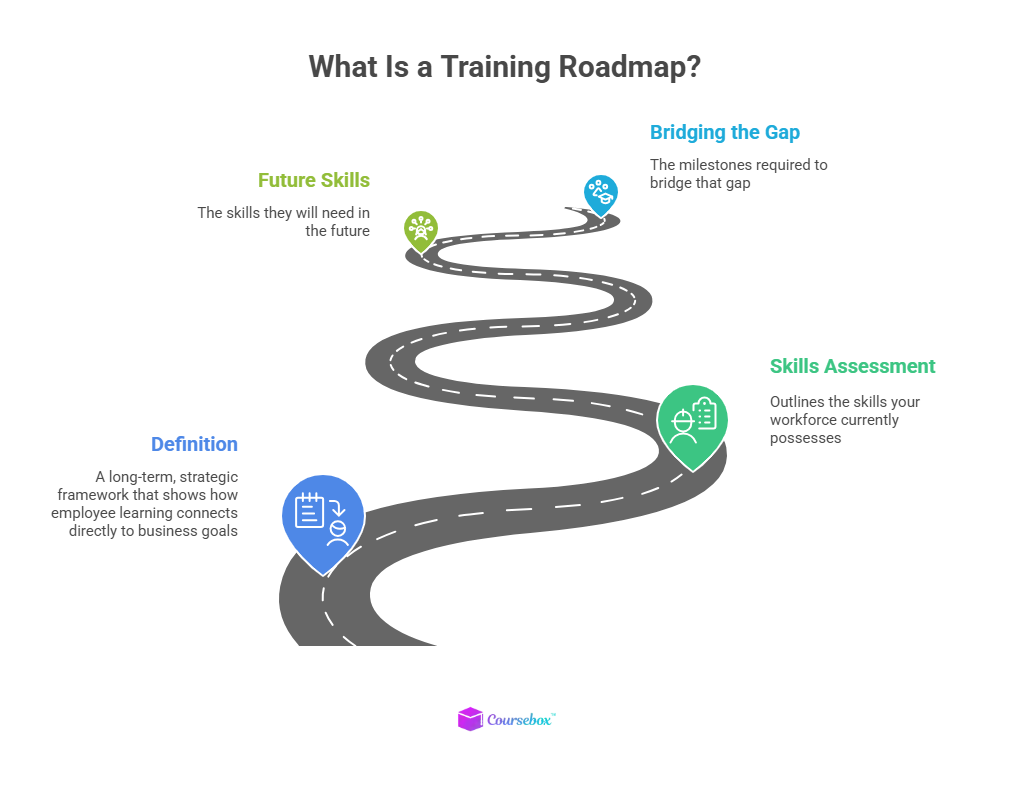
A training roadmap is a long-term, strategic framework that shows how employee learning connects directly to business goals. It outlines the skills your workforce currently possesses, the skills they will need in the future, and the milestones required to bridge that gap.
Rather than offering one-off sessions, a roadmap organizes development in a logical sequence. It basically breaks down a training program into components, each signifying its importance in filling the skill gaps.
Additionally, it shows employees that you care about them. When companies dedicate time and resources to building a tailored roadmap, they promote a culture of continuous learning. As a result, employees remain committed, which in turn enhances the retention rate.
A successful training roadmap ensures employees receive the proper training at the right stage of their development. It offers a clear vision of learning objectives while also adapting to evolving business needs. Here are some key components of a training roadmap:
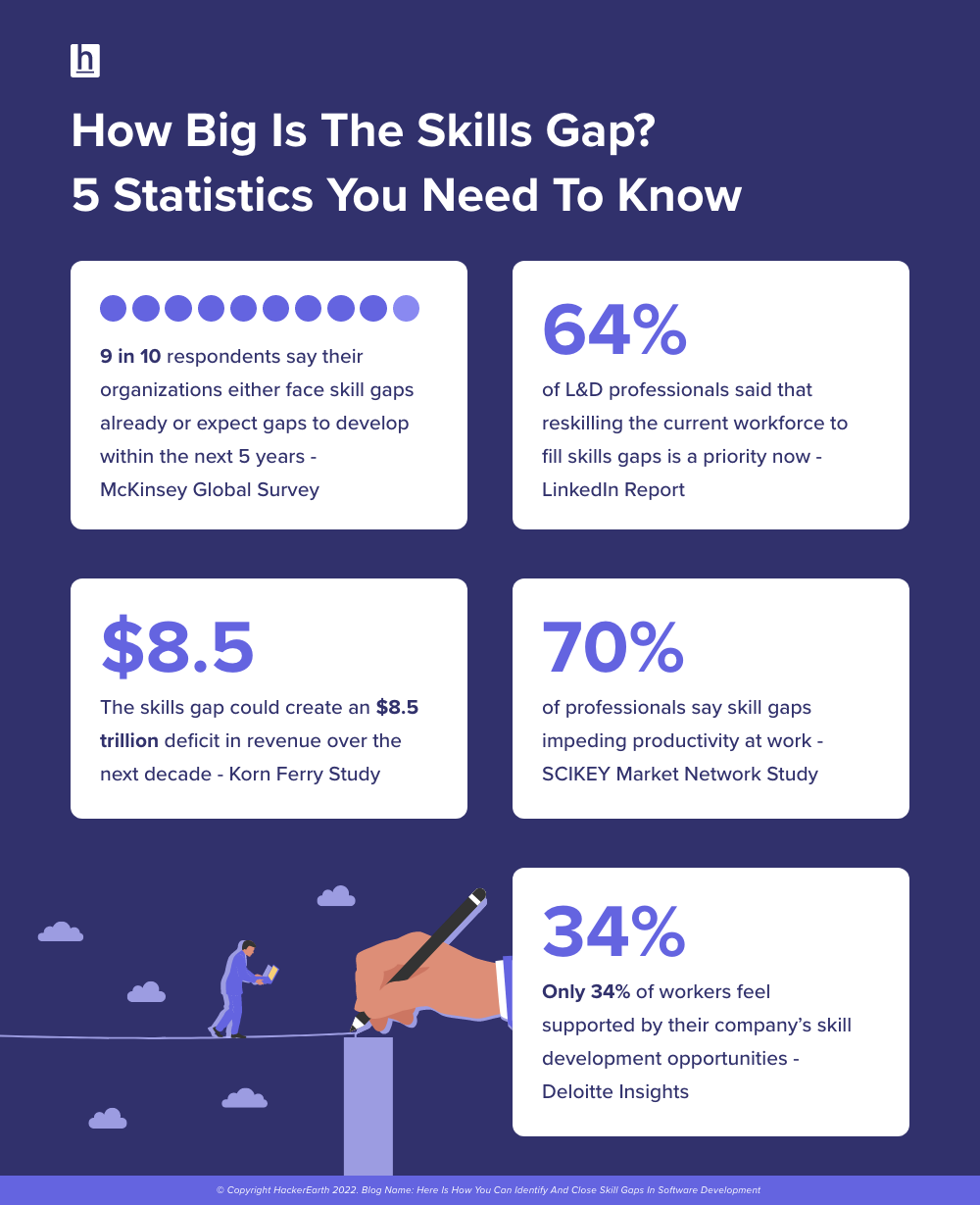
Every solid roadmap begins with a clear understanding of where employees currently stand. A survey by McKinsey reveals that 87% of companies already face skill gaps or expect to within a few years. When these gaps are ignored, they translate into inefficient training, lower productivity, and higher turnover.
A skills gap analysis identifies the exact capabilities your employees lack. It may involve assessments, performance reviews, or surveys that highlight areas of weakness as well as strengths to build upon.
Once the gaps are identified, the next step is to fill them strategically through a targeted approach. Learning pathways ensure employees move from foundational knowledge to advanced expertise.
Instead of randomly assigning workshops or courses, pathways build each stage on the one before it. Learning pathways give employees a clear sense of progression. It prevents the confusion that arises when training feels out of context or way advanced compared to the current skill levels.
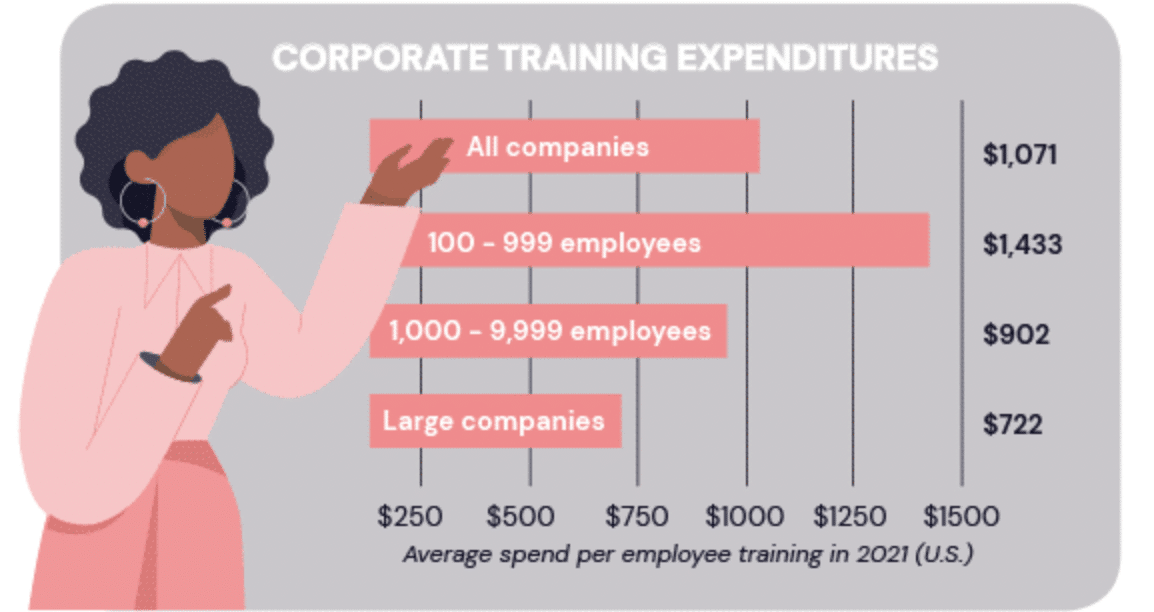
Training requires investments in budget, technology, trainers, and most importantly, employee time. Training roadmaps identify the resources and allocate them wisely. This prevents last-minute scrambles that reduce the impact of training.
According to the Association for Training Development, companies spend approximately $1,280 per employee each year on training. Without careful planning, much of this investment may be wasted on irrelevant content that provides no value.
Training roadmaps break learning into clear phases, with milestones that help employees and managers measure progress along the way. These milestones act like checkpoints to keep learners motivated and ensure long-term knowledge retention.
For example, a new hire’s journey might begin with onboarding training in the first two months, followed by role-specific training in the next three months. It also includes a mid-year review and advanced training by the end of the first year. Such structured timelines transform long-term goals into achievable steps.
To make the process even easier, we’ve prepared a ready-to-use, free training roadmap template that you can customize for your training program. The template also includes a practical example to help you understand how the roadmap works. It’s available in both Word and PDF formats, so you can choose one that works the best for you.
When people think of a training roadmap, they envision a schedule that includes courses, workshops, and deadlines. In reality, it’s a comprehensive strategy that requires preparation, assessment, and management before implementation. Let’s take a look at seven practical steps to create a training roadmap:
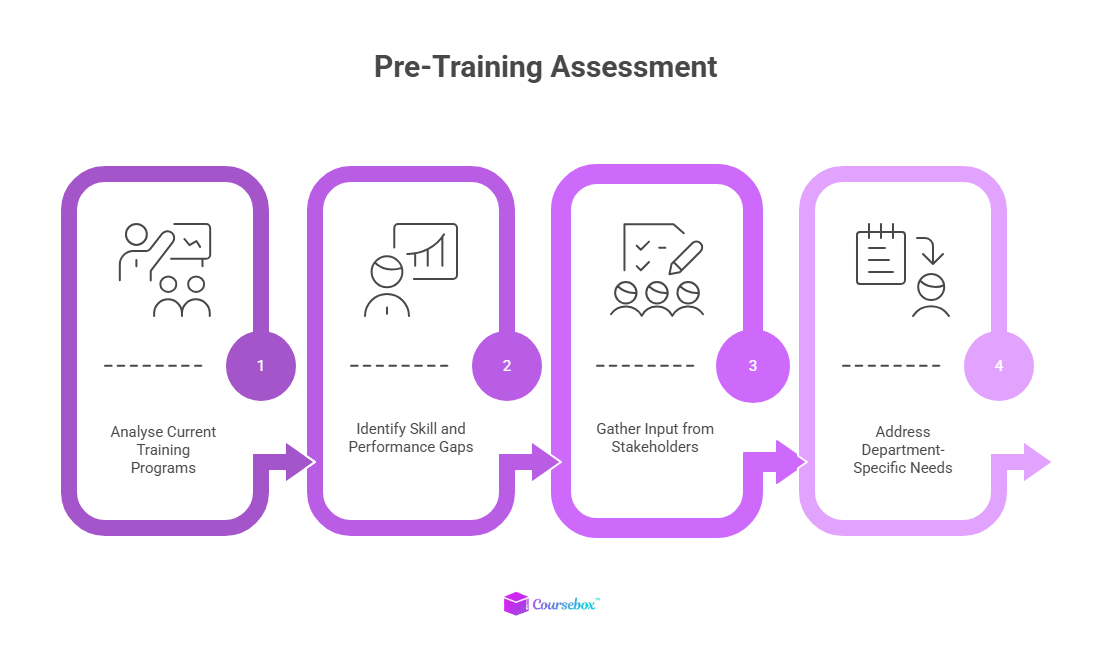
Every training roadmap requires a thorough understanding of your organization’s needs. When conducting a needs assessment, start by asking yourself a few important questions:
Once you’ve answered these questions, the next step is to take employee feedback. Surveys, performance reviews, and one-on-one sessions often reveal hidden challenges that you might have missed otherwise. By combining business objectives with employee perspectives, the roadmap targets the most pressing skill gaps first.

In this competitive industry, vague goals, such as “Improve leadership skills,” don’t cut it. You need to define precise objectives and establish SMART goals. They provide a clear framework for evaluating progress and demonstrating the return on investment in training.
SMART Goals: SMART (Specific, Measurable, Achievable, Relevant, and Time-Bound) goals help organizations set objectives that are both practical and trackable. This makes the progress easier to monitor and evaluate. For example, a company might commit to increasing customer satisfaction scores by 10% within 12 months through targeted communication workshops.
Learning pathways organize training modules into sequential steps. It builds employees’ knowledge progressively rather than jumping into courses that feel disconnected. For instance, a new hire may start with an onboarding learning path and later transition to job-specific training.
To design a clear learning pathway, group your employees’ existing skillsets, the skills gap, and your training resources in one place. From there, update and organize your training content in a natural progression from beginner to advanced. Include clearly defined objectives, goals, checkpoints, and timelines to guide employees and keep them on track.
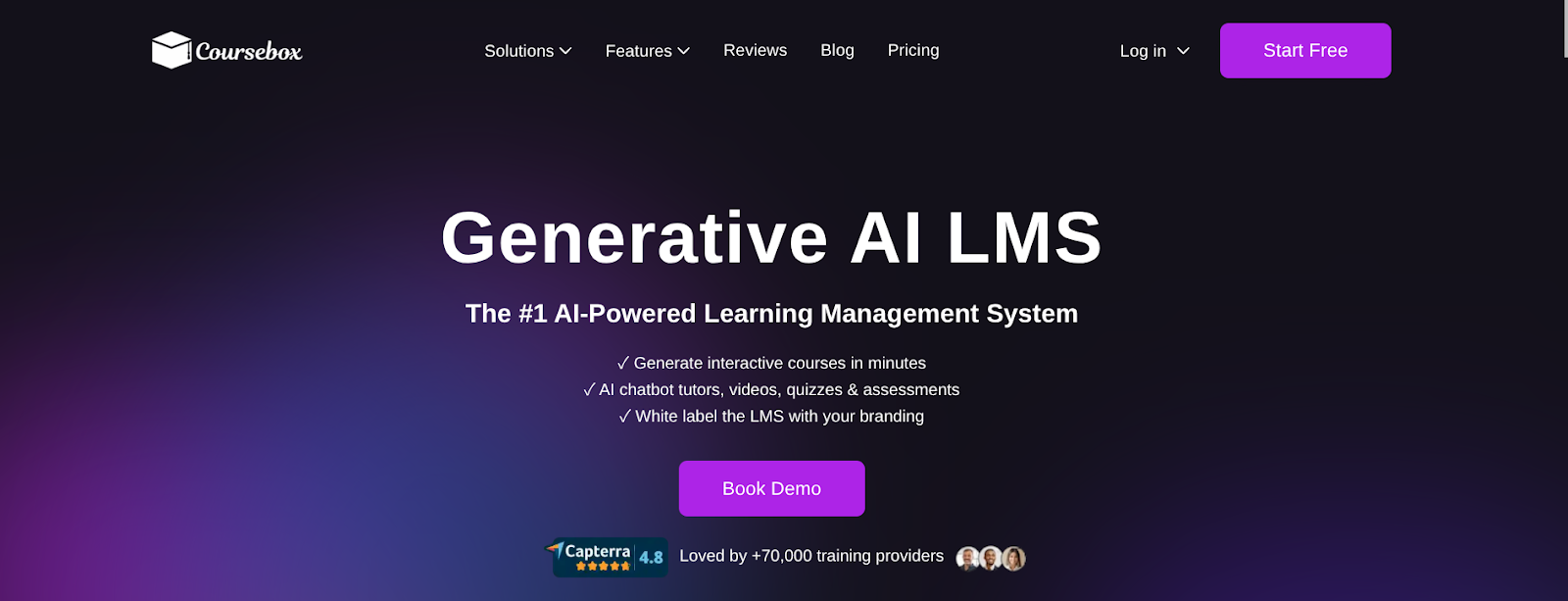
Training requires significant resources. Globally, companies spend more than $340 billion on training their employees. By strategically allocating these resources, you can achieve a lot more within a limited budget.
Decide early on whether you want traditional face-to-face or online training. If you’re opting for online training, consider eLearning platforms and tools to facilitate the process.
Coursebox E-Learning Platform: Coursebox offers integrated solutions for creating courses, tracking performance, and reporting engagement analytics. It allows you to monitor how well your employees are doing through AI assessments and AI quiz generators.
A visual roadmap makes the training journey easy to understand. When designed well, it becomes a living reference point for employees, managers, and executives alike.
For smaller teams, platforms like Excel or Trello can effectively display training timelines and checkpoints. However, larger organizations require advanced tools to design a Gantt chart and a key result framework to visualize their training plans.
For training to be successful, employees need to know why the roadmap exists, how it benefits them, and how it ties to the company’s objectives. Publish the roadmap in company newsletters or add it to interactive dashboards on the LMS to keep it always visible to employees.
Training roadmaps also help convey the training plans to the stakeholders and secure buy-ins. Encourage questions and feedback during meetings, and keep the executives involved at every step.
The final step is to put the roadmap into action. Implementation should follow the priority order established earlier, with critical skill gaps addressed first.
It’s important to roll out training in phases and give employees time to absorb knowledge and apply it before moving on to the next stage.
Make sure you check your employees’ learning preferences beforehand. Tailor training delivery according to the diverse learning preferences, whether it’s self-paced e-learning, workshops, or mentorships. Offering multiple modalities improves engagement by accommodating different learning styles.
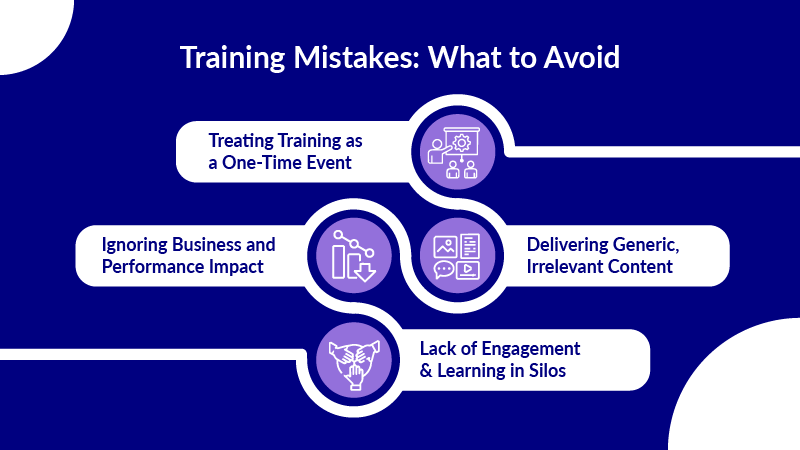
Mistakes while designing a training roadmap waste resources and reduce employee morale, which ultimately affects their productivity and turnover. Recognizing these mistakes early on helps you correct them on time and keep your training on track. Here are the four most common mistakes:
Research shows that companies that prioritize fewer initiatives are 16% more likely to succeed than their competitors.
While it’s tempting to tackle every skill gap simultaneously, overloading your roadmap with goals can overwhelm employees. A better approach is to narrow the focus to the highest-priority objectives initially.
Rolling out advanced modules before employees have mastered foundational skills leads to disengagement and poor knowledge retention.
For example, asking a new sales representative to dive into advanced CRM analytics before understanding product knowledge is a recipe for disaster. To avoid this, structure modules sequentially so that each stage builds on prior learning.
According to the 2024 Gartner Survey, companies that use agile L&D practices achieve 1.5 times better results. This is because market trends, technologies, and organizational goals shift constantly. If your training doesn’t keep pace, it soon becomes irrelevant.
Regular check-ins, feedback loops, and knowledge assessments help ensure the roadmap is delivering results and highlight where adjustments are needed.
One of the biggest mistakes an organization makes is handing over training entirely to HR. Training is not just an HR initiative. It’s a company-wide strategy that requires buy-in from leaders at every level.
Involve stakeholders early in the roadmap, communicate progress regularly, and encourage leaders to reinforce learning in daily operations.
With the majority of the companies facing a skills gap or expecting it soon, you must act quickly. And the first step begins with building a training roadmap.
A roadmap not only strengthens your workforce but also enhances your market position, as employees value companies that invest in their professional development.
As new technologies like AI reshape industries, roadmaps provide an ideal solution for organizing and implementing measures to bridge the gap. With eLearning platforms like Coursebox, creating and executing training roadmaps has never been easier.
Coursebox offers a comprehensive solution for designing, delivering, and tracking employee learning. Sign up for a free trial and see how our tool manages your training smartly!
A compelling visual training roadmap requires online whiteboards, management tools, and design software. Some of the most popular tools include Miro, Jira, Productboard, and even PowerPoint. eLearning tools, such as Coursebox, also assist by providing learning paths that help organize your roadmap.
Training roadmaps should be reviewed quarterly, or at least annually, and updated accordingly. A roadmap reflects the evolving business needs, industry trends, and changes in your internal policies. Hence, you must update it frequently to avoid irrelevant training from passing on. Employee and stakeholder feedback also plays a huge role in determining when a roadmap needs to be updated.
A training plan focuses on one program, course, or skill development activity for an individual employee. Alternatively, a training roadmap provides an organized mapping of all the skills your employees currently possess, as well as the ones they need to stay relevant. It basically shows the “what and why” of training, while a plan shows the “how”.
As a small company, if you can’t afford to invest in expensive roadmapping tools, you should consider the free tools available in the market. These include Trello, ClickUp, PowerPoint, Excel, and Google Sheets. As the business grows, companies can scale into advanced roadmapping tools and software.
